Tire Buying Guide
How To Choose The Right Tires And Save Money
Tires are just one of the things we often take for granted and give little thought. That is until we find ourselves stranded on the side of the road due to a flat, blowout or other form of a tire mess. Then it’s off to buy new tires, which is often a challenge of its own.
I recently seen a survey that mentioned the top things in life that people would like to avoid the most. Not surprisingly, having to buy new tires ranked right up there alongside having to go to the dentist. In a way, they both share something in common. You know you have to go and get it taken care of, but you also know it’s going to be a little painful at the same time, at least financially that is.
Add to that the fact that most people have no idea of the type of tires, let alone brand, that they need for their vehicle among the hundreds and hundreds of different tires, and it’s easy to see how unpleasant the process can be.
What this quick guide is designed to do is to help you choose the right tires for your particular car, truck or van. Plus how you can save the most amount of money in doing so, regardless of whether you know anything about tires or not. It takes you through all the mumbo-jumbo that appears on the sidewall of every tire and lets you know what it all means and why it is important.
You will also find some helpful tire buying tips so that you don’t get ripped off and spend money on tires that you don’t need to be spending it on. We’ll give you the questions you should ask any tire salesman and what to look out for as well.
Finally, we have included some helpful tips on how to maintain your new tires so that you can get the most amount of tread life from them and hopefully extend the time before having to buy new ones again.
We know how expensive new tires can be. So we’ve put this book together to help make tire buying a little easier. We provide detailed reviews and helpful information on all types of tires for your car or truck, as well as where you can find them for your best price.
A Look At What All The Tire Sidewall Numbers & Letters Mean
If you have ever looked at the sidewall on any tire, then you may have been pretty confused with all the letters and numbers that are on there. What does it all mean? Well, let’s take a quick look and hopefully eliminate most of the confusion.
Let’s start off with the most common set of numbers you see on any type of tire. It will look something like this –
215/65R15 95H or something similar to that. All tires have their own numbers, and you may have a different size.
- “215” – This first set of numbers let you know the section width of any particular tire in millimeters. It is the measurement of the sidewall from edge to edge. The higher the number, the wider the tread area is in most cases. So a 235 would be narrower than a tire that is a 275.
- “65” – This number is the aspect ratio of the tire. Without getting overly technical, this is the section height compared to the section width. The lower the number the lower the height.
Widely speaking, the lower the number the better the handling and steering response of the tire. This is why you see ultra-high performance tires in sizes that have numbers like “40”, “35” and even “20”.
- “R” – This simply tells you that it is a radial tire, which has been the standard for many years. Of course, you can still find bias-ply tires and you would know that due to the “B” instead of an “R”.
- “15” – The rim diameter the tire is designed to fit on. It’s important for you to match up the tire size with the same rim size. You never want to try and fit an 18 inch tire on a 17 inch rim. You will need to have rims that match the tire size.
- “95” – This last number is a measure of the tire’s load index, or how much weight it can handle before giving out. This is a very important number, especially for anyone with a vehicle that does any hauling of passengers or cargo.
There is a standardized Load Carrying Capacity Per Tire chart that lets you know what this number means. For a rating of “95”, it means that the tire can carry a maximum weight of 1,521 pounds.
A rating of “75” would mean the tire can safely handle up to 852 pounds. That is for just this ONE tire by the way. So you would multiply that by 4 to get the maximum capacity for your vehicle.
- “M+S” – This is known as a Mud and Snow rating. It means the tire meets all-season standards for above average traction in mud or light snow, as well as for driving in lower temperatures.
However, it does NOT signify that the tire will have the same type of traction as a dedicated winter tire. That’s important to keep in mind because many drivers mistakenly believe that because their tire has an M+S stamping on the sidewall that it means it will handle going through deep snow, slush and ice like a regular winter tire.
- “Mountain Snowflake Emblem” – This unique three peak emblem is fairly new to the tire world. It lets you know that the tire meets the Rubber Manufacturers Association severe snow service requirements. Traction is the same as a standard winter tire.
- “XL” – Some tires have an XL designation on them. What that means is that this tire would be an “extra-load” tire that could handle much higher weights than a tire without this designation. (Note: If you have tires that are XL, always replace them with new tires that are also XL tires.)
- “H” – The last letter tells you the speed rating of the tire. Why is this important? It lets you know the maximum speed the tire can be driven at for any period of time. In this case, “H” speed rated tires can go up to 130 mph. At speeds higher than that, the tire may fail if it is driven for very long.
- Other Number & Letters On The Sidewall
Tire Speed Ratings
S – 112 mph
T – 118 mph
U – 124 mph
H – 130 mph
V – 149 mph
W – 168 mph
Y – 186 mph
Maximum Air Pressure
Also found on the sidewall is the maximum air pressure that the tire can hold before failing. It’s important to keep in mind that this number is NOT the recommended tire pressure.
You can find that by looking at the sticker found on the driver or passenger side doorjamb. It will also be in your vehicle’s owner’s manual.
Traction Rating
This set of letters indicates the tires rating for straight-line braking on wet pavement. The ratings go from AA, A, B and then C. The best rating is an AA, while the lowest is C.
Temperature Rating
This rating letter tells you how well the tire withstands heat when driving at high speeds. A is the top rating, B is good and C is the lowest.
Manufacturing Date
This is a critically important point to know when buying new tires. To find the date your tires were manufactured, look at the sidewall for a set of numbers like you see below.
In this example you can see the numbers “3812”. This means the tire was made in the 38th week of the year 2012.
Why is this important? Beyond warranty purposes, it is also a safety issue. Many people do not realize that tires will only last for so many years whether driven on or not.
I know someone who found this out a couple of years ago when he bought a set of “new” tires for his car. The tires were technically brand new and never driven on. But… they were made 9 years prior to being installed on his vehicle. They had been sitting around a warehouse or storage area all those years.
Once he got to driving on them the tires began separating within weeks. Had he known to look at the “born on” date he could have avoided the issue. Thankfully this did not end in a disaster out on the highway.
You really want to take a second and have a look at the tire’s manufacturing date because there are small local shops out there that will sometimes purposely, and also mistakenly, sell their old “new” tires to get rid of the inventory. Of course, this is not generally the case with most shops, but it pays to keep your eye on this. For bigger tire chain stores like Discount Tire or Tire Rack you will likely never see this issue come up.
What Is A UTQG Treadwear Rating?
The treadwear grade of a tire is a comparative rating based on the wear of a tire when tested carefully under controlled conditions. For example, a tire graded at 500 should have its useful tread last twice as long as a tire graded 250. That’s easy enough to understand when you are only comparing different tires under the same brand.
However, the problem comes when you use these ratings in comparing similar tires under different brand names. One tire manufacturer may grade a comparable tire as 400, but another one may grade theirs as 600.
There simply is no clear cut system in place to use as a level playing field so to speak. Therefore, it is not recommended to use one manufacturer’s grade versus another, but instead to compare tire grades within a given brand.
Also, the actual treadwear performance can vary tremendously according to individual driving habits, service practices (especially air pressure maintenance), road conditions and climate you drive in. It all affects the overall life of the tread.
Tire Categories
One of the most common questions we hear every day when drivers are looking at buying new tires is, “What kind of tires do I really need for my car, truck or SUV?” Choosing the right type of tire is so important.
It can be the difference between getting behind the wheel and enjoying your drive, or getting behind the wheel and cursing your tires on a constant basis. Equally important is that it can also be a safety issue in some cases.
For example, try driving on a high-performance summer tire in the winter on a snow or ice covered road surface. Or trying to take an all-season tire in the back country that is only fit for a heavy-duty mud-terrain tire.
Here’s a quick look at the different categories of tires to give you a start in making your best choice.
All-Season Tires
This type of tire is far and away the most popular you’ll find today. The tread is designed for driving on dry, wet or even light snow covered pavement. It’s a solid choice for year-round everyday driving needs, and tread life can reach up to 100,000 miles with certain models.
Summer Tires
Just as the name implies, this type of tire is designed for warm weather driving. Made for high performance vehicles in most cases, these tires provide good performance on either dry or wet road surfaces. They are not designed to be used in cold weather conditions where temperatures constantly dip below 40 degrees F.
Snow Tires
Built for the toughest winter weather driving conditions. Snow tires provide optimal traction and grip on snow, slush and freezing rain, as well as wet or dry road surfaces. They are also designed for use in very cold temperatures. Snow tires are not meant for warm weather driving on a daily basis due to their tread compound, which will wear out quickly on hot dry pavement.
All-Terrain Tires
Engineered for off-road driving on all types of rough terrains, this type of tire provides excellent grip on gravel, rocks, dirt, light-mud and sand. Some models offer better than average highway driving abilities as well.
Mud-Terrain Tires
This type of tread design offers maximum traction for off-road use, particularly in deeper mud. Simply put, an M/T tire will go through virtually anything you want to throw its way.
High Performance Tires
This category of tires is for tires designed to be used on cars that need high speed capabilities and superior grip in the corners. Some are built for use on the street or track as well.
High Performance Touring Tires
Performance touring tires can be found mainly with H or V speed ratings, and in some cases can be used in all-season driving at the same time. The thing to look for here is whether it is a summer touring tire or an all-season touring tire. This style of tire is very comfortable for highway driving.
Ultra-High or Maximum Performance Tires
This is where you will find the serious high performance tires that are W, Y and Z speed rated. Some models can be used on the race track and on the street.
How To Choose The Right Tires And Save Money At The Same Time
Driving Styles
One of the keys in choosing the right tire is to take into consideration how you drive your vehicle. Do you do a lot of “spirited” driving? Then you would want to look into a higher performance tire over a basic all-season model.
Do you do a lot of highway driving and need a tire that rides more comfortably than others? A luxury all-season or touring tire would be a good fit for you here.
Are you in need of tires that can withstand heavy loads or are used on light trucks and vans? If so, you would not want to use a passenger tire. Look for light truck tires instead.
Would you like better performance off the beaten path on weekend fishing trips or camping trips? An A/T tire will be a better choice than a highway all-season model.
I know this all sounds like common-sense but this is something often overlooked by many drivers when buying new tires.
Fuel Economy
With the high price of fuel, many drivers are looking at tires that can increase fuel mileage and save them money in the long run. Is this really possible? The answer is a definite yes…you can purchase new tires that are made to improve fuel economy.
Tires with the latest technology can see gains as much as 10% over other types of tread. Their lower rolling resistance makes this possible. Gaining 10%+ in fuel economy can be great, but it often comes at the expense of performance.
Be sure you look at the overall abilities of a tire that is listed as providing enhanced fuel savings and whether it matches your needs.
All that being said, we advise being careful when hearing all the claims of dramatic increases in fuel mileage. There are so many variables involved in factoring in these increases, that it is subjective at best in most cases. We would not let the mention of added fuel economy be the ONLY reason for purchasing any one particular tire.
Beyond that, in many cases you can improve gas mileage by simply keeping your tires inflated at the correct pressure. That is something many drivers fail to do.
Tread Wear
Getting a tire with a long tread life can also save you a lot of money down the road. Of course, there are a LOT of factors that go into how long any particular tire is going to last. Some of these include your driving habits, the type of climate you live in and the type of roads you drive on regularly.
For example, if you live in the country and drive gravel roads on a daily basis, your tires are going to wear faster than if it were blacktop.
Doing burnouts or skids is another big contributor to shortened tire life, but if you’re already doing this then tread life isn’t likely to be a factor for you anyway.
The other major factor is the tire manufacturers’ estimate of longevity for each tire model. All-season tires are designed to last between 40,000 – 100,000 miles, depending on the model. High performance all-season tires will have a lower tread life than standard all-season tires. High performance summer driving tires may not even have a tread life warranty and you may only get 20,000 miles out of them.
The thing to keep in mind with tread wear estimates is that every tire manufacturer uses their own unique testing methods as we mentioned earlier. But these estimates are not based on actual real life conditions that you encounter every day when you’re driving to and from work or on the highway, etc.
So while the ratings do help give a general outlook, take them with a grain of salt. Overall, expect to get 2-3 years out of a good all-season tire that is driven under normal circumstances.
Tire Reviews
The internet has made it incredibly easy to find reviews on anything and this includes tires as well. Now you can go online at any time of the day or night and find independent reviews that can help guide your tire buying decision.
The key here is to look for sites that are providing both the positive and the negatives on every tire.
A review should not be a thinly disguised sales page, but instead it should tell you more than the tire manufacturers’ short list of bullet points. Look for areas such as what the tire is designed for, how well it corners and grips the road, what to expect with road noise, tread life, warranty, what sizes it is available in, what vehicles it is designed for and the price range among other things. All of this information can help you with choosing the best tire for your car or truck.
The other thing that tire reviews will give you is knowledge. You’ll know more about which tires are best for your car and which ones are not. You’ve armed yourself with quality information that can also save you money. Perhaps you will discover that the most expensive tire is really not the best choice. You may also find that buying your tires online is the best way to go, which leads us to the next point…
Where Are You Buying Your Tires?
Where you buy your tires will also greatly affect the price you’ll pay for them. Many people still go to the dealership where they purchased their vehicle to get new tires put on.
While that may seem like a good idea at first glance, and you can get new original-equipment tires mounted and balanced that way, expect to pay a premium price for it. In many cases it may cost you double the amount you would pay by simply going to a tire store or buying online. Rarely, if ever, would we advise anyone to buy their tires at a car dealership.
Local tire dealers, as well as larger national chains like Discount Tire, Pep Boys, NTB and others, will generally save you more money and make the task less of a hassle. One of the best places we recommend in buying new tires is Discount Tire. They specialize in tires and wheels only. It is all that they do, so you often will find the lowest prices. They have over 900 stores around the U.S. that you can visit or you can shop online and they will ship your tires literally anywhere around the world.
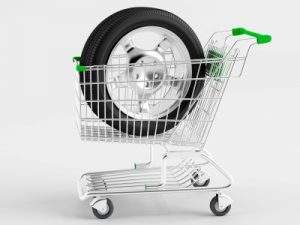
Another option that can save you even more money on new tires is shopping online. Again, websites like Discount Tire, Tire Rack and even Amazon offer all makes and models of tires that ship directly to your front door regardless of where you live. This can save you a LOT of money.
The other plus in shopping online is the selection. You will find an enormous variety of tires available online that local stores simply do not sell or have the ability to keep in stock due to limited space.
Shipping is generally free of charge which saves you even more. That said, be sure to check to see if shipping is included in the price or if it is extra.
Keep in mind that what may first appear as a much lower price on a set of tires is actually a set that will cost more because you’ll have to pay for shipping. Places like Discount Tire include free shipping on all their tires.
Having your tires shipped directly does mean you will have to take them to your local shop to have them mounted and installed unless you have made arrangements to have them shipped to your favorite shop. That’s not a big deal and in many cases you will find shops that offer discounts and specials on installation.
The key here is to know upfront what the costs are going to be for mounting, balancing and tire disposal, if applicable in your area. This way you can do a more accurate comparison.
Questions To Ask Tire Dealers
If you are going to buy new tires from a tire store or dealer, ask some relevant questions before making a purchase. Don’t feel pressured to get any brand or model before knowing if it is the right choice for your needs.
We’ve heard many stories over the years from folks who overspent on tires they didn’t need or were pressured into putting a specific brand onto their vehicle because of a “special offer”. Others have bought tires that were not good for the type of weather and road conditions they drive in on an everyday basis.
To be fair, this is not the case with all stores. In fact most are very helpful and professional. But there are a few questions to ask any tire dealer when looking for new tires:
•Are the current tires on my car or truck the best option for me?
•Based on my driving habits and vehicle, what are the best tires available?
•What is the mileage warranty with the tires?
•Are there any current recalls on the tire?
•When were the tires made? Is the date within the past couple of years? (Look at the date on the sidewall)
•What is the total “out the door” cost for the tires installed?
You now have the answers you need in order to make your best buying decision based on your vehicle, driving habits and needs.
One of the reasons we like Discount Tire as much as we do, other than the lower prices, is that you can do this research online when it’s most convenient to you. You can start by using our tire reviews to get your list of the best tires for your vehicle. Then go to their site and get the total out the door costs, mileage warranty info and more. You can even schedule an appointment online to have them installed if you like. That’s extremely convenient for busy people who need new tires.
Keep Your Tires Maintained
Now that you have your new tires, keeping them maintained is important for both tire performance and longevity. Maintain the proper tire pressure – This alone can prevent your tires from prematurely wearing out and increasing their life. Why is it a big deal? Tires that are under or over inflated will wear out much quicker than those with proper tire pressure. They can also wear out suspension parts as well.
Tires with the correct air pressure will create optimal fuel efficiency and save you money in the long run on gas. Under inflated tires cause a severe loss in performance on the road. Try taking hard corners with tires that have low air pressure. Braking abilities are also compromised due to low inflation.
The best tip here is to invest a dollar into a tire gauge and always check tire pressure at least once a month when you fill up your gas tank. It takes only a minute or two and is well worth the time. This is especially true during seasonal temperature changes.
Rotate your tires – Having your tires rotated on a regular basis, like every oil change, can prevent uneven tread wear, increase fuel mileage and increase tire longevity and performance.
Conclusion
Buying new tires doesn’t have to be a scary experience. Hopefully you now have a better understanding of what to look for before making any new tire purchase. Keep these quick tips in mind when looking for any new tire:
• Choose the right tire category to get started. For example, all-season tires, snow tires, high performance tires, etc.
• Keep your driving habits and road conditions in mind when choosing a tire.
• Consider whether you want a tire that is more fuel efficient or has a longer lasting tread life.
• Look at different tire reviews which can help you know whether the tire you are considering is worthwhile and right for your needs.
• Decide how and where you plan to buy your new tires. Will it be at a car dealership where you purchased your vehicle? At a local tire store or shop? Or will it be online? Take your time because this can save you a lot of money and hassle.
• Ask questions and do not let yourself be pressured.
• Keep your new tires maintained for maximum tread life and performance.

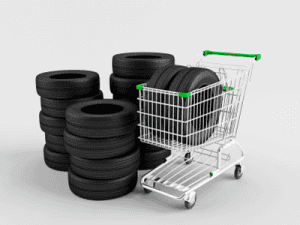
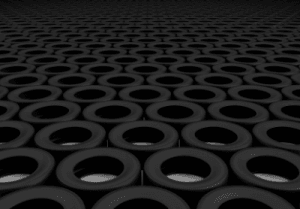
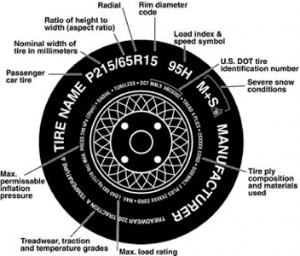
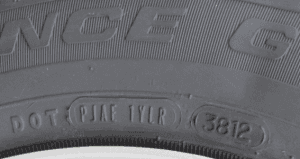
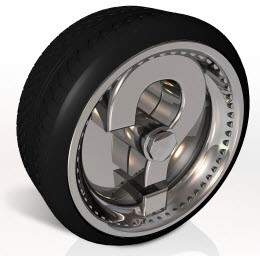
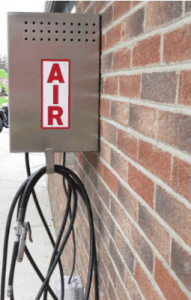
My brother wants to buy new tires for his car and is hoping to choose the best ones. I love how you recommend checking the internet for reviews about specific tires and shops to know what is best for your car. I will be sure to pass these tips along to my brother so that he can find a reputable shop to buy new tires from.
Very Great and helpful article. Thanks
Hey Trevor, thank you very much! Stay tuned for more articles.
So very helpful, thank you.
Having a Subaru, I feel like I always want to go back to the dealer because of the AWD component, but they are far and above more expensive. I’m doing my research first and it isn’t always cost that ‘drives’ (excuse the pun), my decision, but it could be a few hundred dollars in this case.
Hey Maureen, I completely understand. In your research, trying using a mix of factors including cost, overall performance, reliability etc.
So very helpful, thank you.
Having a Subaru, I feel like I always want to go back to the dealer because of the AWD component, but they are far and above more expensive. I’m doing my research first and it isn’t always cost that ‘drives’ (excuse the pun), my decision, but it could be a few hundred dollars in this case.
Thank you very much! Our tire reviews should definitely help speed up your research.
This information was very helpful. Thank you for taking the time to do this, Wanda
I am so glad I found your page. This is great information for someone that always went by what the “dealer” recommended. Now I can make an informed decision.
Thank you, wonderful insight.
THANKS for all the info. I am a very senior woman who worked for 52+ years in a dealership, thus never had tire purchase on my mind as I was lucky enough to always drive a demo. I am retired, the dealership is sold and my 2013 RDX needs new tires. I am so glad I came across your fabulously detayled info. It will be fun walking into a service department and be fully in the know how when I make my purchase.
This is a great article on a new bee like me on this subject. I am much informed about my buying decision of tires. Thanks a lot!!
Thanks for your comment and kinds words. We appreciate it.
Great information on tires along with the associated details. I utilize your site for reviews and other need information for comparison of manufacturers. Just like your reviews the information presented is top notch. Thanks for being a great resource and assisting us consumers within the tire buying community.
Thanks for your kind words.
Very informative, thank you for all the tips!
how do you feel about the road hazard warranty offered by online vendors?
This is a very comprehensive guide, one that I’ll be filing for later use. Something you didn’t address was why and how often tires should be balanced. Thank you.
Thanks for the kind words. We appreciate it.
To maintain a smooth ride and prevent excessive treadwear, I would suggest having them balanced when you get them rotated or once every 5-8k miles.
However, if you begin noticing steering wheel vibrations while driving on the highway, it could be a good indication your tires need to be re-balanced.
This was a very helpful overview. Good job. Thanks.